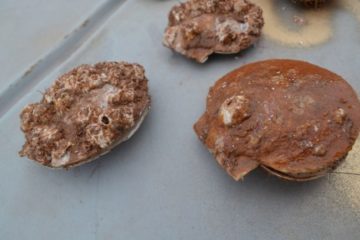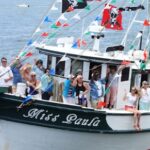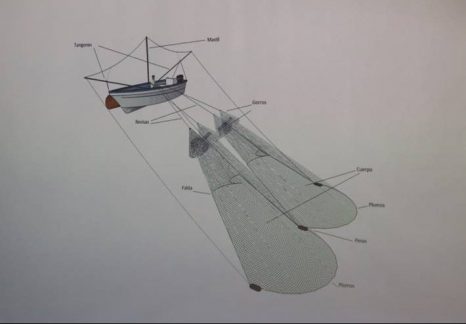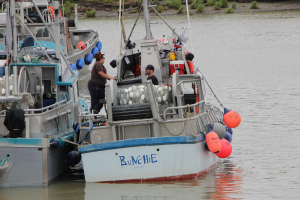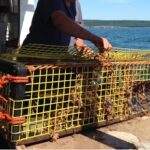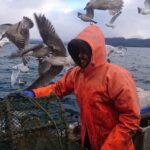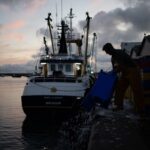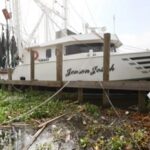Tag Archives: Department of Fisheries and Oceans
Last In First Out – Shrimp quota change may be ‘disastrous’ for Nova Scotia fishery
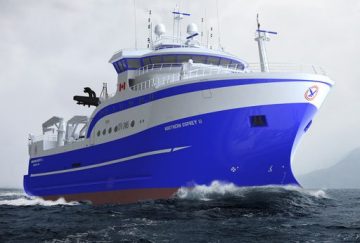 A massive decline in northern shrimp stocks off the northeastern coast of Newfoundland could cost Nova Scotia fish companies millions. That has one Nova Scotia fishermen worried about his own commitment to buy a $60-million factory freezer trawler that could fish year-round. “Changing the ground rules at this point in time could have a disastrous impact upon us,” said Liverpool’s Ulf Snarby. With partners in New Brunswick and Labrador, he has been fishing northern shrimp off the northeastern coast of Newfoundland, called Area 6, since 1977. Fishable shrimp stocks declined by 41 per cent in Area 6 from 2014 to 2015, the Department of Fisheries and Oceans reported in January. With that dramatic decline in the stock, many in the industry expect quotas to be reduced. That’s caused a fight to brew between fishermen in Newfoundland and those in Nova Scotia over who can fish what’s left. Read the rest here – The new $60 million factory freezer trawler Click here 10:34
A massive decline in northern shrimp stocks off the northeastern coast of Newfoundland could cost Nova Scotia fish companies millions. That has one Nova Scotia fishermen worried about his own commitment to buy a $60-million factory freezer trawler that could fish year-round. “Changing the ground rules at this point in time could have a disastrous impact upon us,” said Liverpool’s Ulf Snarby. With partners in New Brunswick and Labrador, he has been fishing northern shrimp off the northeastern coast of Newfoundland, called Area 6, since 1977. Fishable shrimp stocks declined by 41 per cent in Area 6 from 2014 to 2015, the Department of Fisheries and Oceans reported in January. With that dramatic decline in the stock, many in the industry expect quotas to be reduced. That’s caused a fight to brew between fishermen in Newfoundland and those in Nova Scotia over who can fish what’s left. Read the rest here – The new $60 million factory freezer trawler Click here 10:34
Fishery closures suggested to save West Coast killer whales
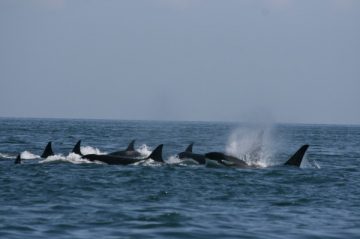 Strategic fishery closures and marine habitat protection are part of a proposed plan by the federal government to protect the threatened killer whales off Canada’s West Coast. The recovery plan for the Northern and Southern Resident Killer Whale population has been set out online by the Department of Fisheries and Oceans with a 60-day public comment period. The document makes 94 recommendations to help the two distinct whale populations that eat only fish. The Northern Residents are listed as threatened in Canada, while the United States has declared its Southern Resident population endangered. A team of experts from the federal Fisheries Department, Parks Canada, the Vancouver Aquarium and the National Oceanographic and Atmospheric Administration in the United States developed the plan between 2011 and 2014. Read the rest here 20:05
Strategic fishery closures and marine habitat protection are part of a proposed plan by the federal government to protect the threatened killer whales off Canada’s West Coast. The recovery plan for the Northern and Southern Resident Killer Whale population has been set out online by the Department of Fisheries and Oceans with a 60-day public comment period. The document makes 94 recommendations to help the two distinct whale populations that eat only fish. The Northern Residents are listed as threatened in Canada, while the United States has declared its Southern Resident population endangered. A team of experts from the federal Fisheries Department, Parks Canada, the Vancouver Aquarium and the National Oceanographic and Atmospheric Administration in the United States developed the plan between 2011 and 2014. Read the rest here 20:05
Fundy Tidal tests on hold, more consultations to be held before turbine launch
 Cape Sharp Tidal has put the brakes on the deployment of its first turbine in the Bay of Fundy, originally set for this weekend so it can meet with concerned community members. Sarah Dawson, community relations manager with Cape Sharp Tidal told the Chronicle Herald Thursday that despite extensive outreach activities, there are still stakeholders in the region that feel like they have not been fully heard. “We are taking a pause to. . .hear from those who don’t feel like they have an opportunity. It’s important that we listen and we learn and we always learn from these sorts of engagements,” Dawson said in an interview. (then they’ll stick it in!) Dawson wouldn’t say how long they will be delaying the deployment. “It’s a positive step,” said Minas Basin weir fisherman Darren Porter. Read the rest here 19:05
Cape Sharp Tidal has put the brakes on the deployment of its first turbine in the Bay of Fundy, originally set for this weekend so it can meet with concerned community members. Sarah Dawson, community relations manager with Cape Sharp Tidal told the Chronicle Herald Thursday that despite extensive outreach activities, there are still stakeholders in the region that feel like they have not been fully heard. “We are taking a pause to. . .hear from those who don’t feel like they have an opportunity. It’s important that we listen and we learn and we always learn from these sorts of engagements,” Dawson said in an interview. (then they’ll stick it in!) Dawson wouldn’t say how long they will be delaying the deployment. “It’s a positive step,” said Minas Basin weir fisherman Darren Porter. Read the rest here 19:05
P.E.I. fishermen are not happy with the lobster size increase
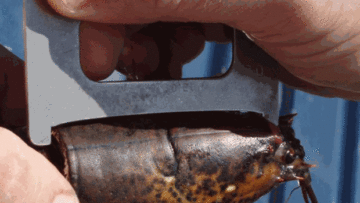 A decision to increase the lobster carapace size for Lobster Fishing Area 25 has upset the P.E.I. Fishermen’s Association. The Department of Fisheries and Oceans issued a notice to fishermen Friday informing them of the change. PEIFA executive director Ian MacPherson said he doesn’t believe the science supports a carapace increase. “Island fishermen just can’t see the value in having less choice for the consumer and having more lobster competing in certain size categories for price,” said MacPherson. “Half of the plants on Prince Edward Island rely on the smaller lobster as a large part of their marketing efforts. They have been marketing to different parts of the world that want that smaller lobster so, you know, this is a real disappointment.” Read the rest here 09:03
A decision to increase the lobster carapace size for Lobster Fishing Area 25 has upset the P.E.I. Fishermen’s Association. The Department of Fisheries and Oceans issued a notice to fishermen Friday informing them of the change. PEIFA executive director Ian MacPherson said he doesn’t believe the science supports a carapace increase. “Island fishermen just can’t see the value in having less choice for the consumer and having more lobster competing in certain size categories for price,” said MacPherson. “Half of the plants on Prince Edward Island rely on the smaller lobster as a large part of their marketing efforts. They have been marketing to different parts of the world that want that smaller lobster so, you know, this is a real disappointment.” Read the rest here 09:03
Piscine Reo-Virus found in salmon on one fish farm in B.C. but more research needed
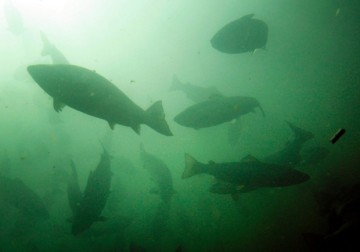 Scientists have detected a potential disease in farmed Atlantic salmon for the first time in British Columbia, but say more research is needed to determine if it could affect wild populations of the fish. Dr. Kristi Miller, head of the molecular genetics research program in the Department of Fisheries and Oceans, said pathologists found lesions on salmon on one farm in Johnstone Strait indicating they had heart and skeletal muscle inflammation. “These lesions were present for an extended period of time, at least eight months, on this (undisclosed) farm,” Miller said Friday. The Piscine Reo-Virus has been associated with all outbreaks of heart and skeletal muscle inflammation, as it was on the single B.C. farm, but it’s not known if it causes the disease, Miller said, adding scientists around the world are investigating how the virus could be linked to the disease. Read the rest here 19:36
Scientists have detected a potential disease in farmed Atlantic salmon for the first time in British Columbia, but say more research is needed to determine if it could affect wild populations of the fish. Dr. Kristi Miller, head of the molecular genetics research program in the Department of Fisheries and Oceans, said pathologists found lesions on salmon on one farm in Johnstone Strait indicating they had heart and skeletal muscle inflammation. “These lesions were present for an extended period of time, at least eight months, on this (undisclosed) farm,” Miller said Friday. The Piscine Reo-Virus has been associated with all outbreaks of heart and skeletal muscle inflammation, as it was on the single B.C. farm, but it’s not known if it causes the disease, Miller said, adding scientists around the world are investigating how the virus could be linked to the disease. Read the rest here 19:36
LIFO policy: Newfoundland and Labrador will take a major hit if the inshore shrimp fishery collapses
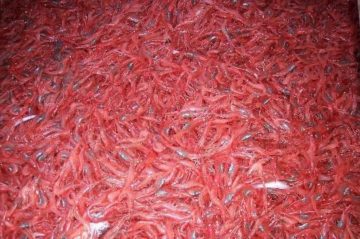 “In 2015, the inshore shrimp fishery contributed $250 million to the economy of rural Newfoundland and Labrador,” Phil Barnes said. “Economic hubs like Gander, Grand Falls-Windsor, Corner Brook and St. John’s all benefit from the inshore fishery. “Inshore harvesters buy vehicles, groceries, fuel, gear and repair services. Plant workers also spend their income at local businesses,” he said. Barnes said the Department of Fisheries and Oceans (DFO) has to scrap its “last in-first out” (LIFO) for the Northern shrimp fishery. “Our inshore fleet has access to one area (Area 6) for a few months of the year while the offshore trawlers are in multiple areas all year round,” he said. “Someone is always there and this has to stop. Read the story here 12:57
“In 2015, the inshore shrimp fishery contributed $250 million to the economy of rural Newfoundland and Labrador,” Phil Barnes said. “Economic hubs like Gander, Grand Falls-Windsor, Corner Brook and St. John’s all benefit from the inshore fishery. “Inshore harvesters buy vehicles, groceries, fuel, gear and repair services. Plant workers also spend their income at local businesses,” he said. Barnes said the Department of Fisheries and Oceans (DFO) has to scrap its “last in-first out” (LIFO) for the Northern shrimp fishery. “Our inshore fleet has access to one area (Area 6) for a few months of the year while the offshore trawlers are in multiple areas all year round,” he said. “Someone is always there and this has to stop. Read the story here 12:57
Department of Fisheries and Oceans: Northern cod biomass at highest rate since 1992
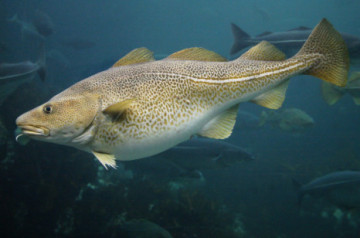 The Atlantic cod stocks are returning, but there’s still a long way to go before a large-scale commercial fishery becomes viable again. That’s the finding of new research by the Department of Fisheries and Oceans, which shows that cod stocks in the Northern region are on the way towards leaving the “critical” designation. The stock in the 2J, 3K and 3L regions has increased to an estimated 538,000 tons of fish — the highest rate since 1992. Still, the stock only reaches 34 per cent of the level needed to escape the “critical” zone. DFO performs stock assessments every three years, sourcing information from vessel surveys, commercial catches, tags on the cod and more. In 2013, the stock reached about 300,000 tons in biomass. Today, it’s almost double that. Read the story here 08:23
The Atlantic cod stocks are returning, but there’s still a long way to go before a large-scale commercial fishery becomes viable again. That’s the finding of new research by the Department of Fisheries and Oceans, which shows that cod stocks in the Northern region are on the way towards leaving the “critical” designation. The stock in the 2J, 3K and 3L regions has increased to an estimated 538,000 tons of fish — the highest rate since 1992. Still, the stock only reaches 34 per cent of the level needed to escape the “critical” zone. DFO performs stock assessments every three years, sourcing information from vessel surveys, commercial catches, tags on the cod and more. In 2013, the stock reached about 300,000 tons in biomass. Today, it’s almost double that. Read the story here 08:23
Just for the Halibut – Quota in the Gulf of St. Lawrence
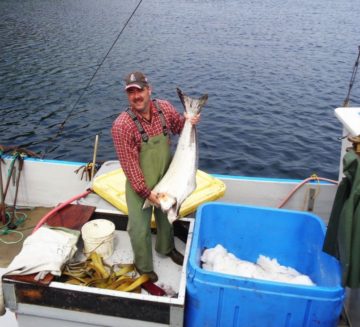 While most attention these days is focused on who should should get how much of a share of northern shrimp, the Department of Fisheries and Oceans is trying to decide how the Atlantic halibut quota in the Gulf should be shared between fishermen in the five Atlantic provinces. These days, fishermen who ply the waters in the Gulf of St. Lawrence, fetch anywhere from $6 to $7 a pound for halibut they catch on hook and line. The quota in the Gulf of St. Lawrence is limited — just over 800 tonnes for the past two fishing seasons — and is shared up between five provinces. Read the rest here 08:58
While most attention these days is focused on who should should get how much of a share of northern shrimp, the Department of Fisheries and Oceans is trying to decide how the Atlantic halibut quota in the Gulf should be shared between fishermen in the five Atlantic provinces. These days, fishermen who ply the waters in the Gulf of St. Lawrence, fetch anywhere from $6 to $7 a pound for halibut they catch on hook and line. The quota in the Gulf of St. Lawrence is limited — just over 800 tonnes for the past two fishing seasons — and is shared up between five provinces. Read the rest here 08:58
Last In, First Out review sees duelling public campaigns by inshore and offshore shrimp harvesters
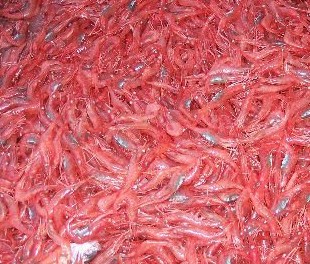 The Department of Fisheries and Oceans will review the Last In, First Out (LIFO) policy for the northern shrimp fishery and that has two groups of harvesters launching two very different public campaigns. Earlier this year the federal government announced it would temporarily suspend the controversial policy. Some fishermen fear a review will work against the smaller inshore boats as they were the last to enter the fishery. In an attempt to win favour by tugging on the hearts and minds of people in this province, both inshore and offshore supporters have released videos. Watch the competing videos here 09:16
The Department of Fisheries and Oceans will review the Last In, First Out (LIFO) policy for the northern shrimp fishery and that has two groups of harvesters launching two very different public campaigns. Earlier this year the federal government announced it would temporarily suspend the controversial policy. Some fishermen fear a review will work against the smaller inshore boats as they were the last to enter the fishery. In an attempt to win favour by tugging on the hearts and minds of people in this province, both inshore and offshore supporters have released videos. Watch the competing videos here 09:16
Last In-First Out (LIFO) policy – DFO official assures advisory panel is ‘arms-length and independent
 An official from the Department of Fisheries and Oceans (DFO) says the Ministerial Advisory Panel chosen to assess the Last In-First Out (LIFO) policy on northern shrimp is an “arms-length” independent panel. Fisheries and Oceans minister Hunter Tootoo declined a request for an interview earlier this week. Instead, Sylvie Lapointe, DFO’s director general of fisheries management, was chosen to answer questions posed by TC Media regarding the appointment and independence of the panel. As for the choice of panelists, Lapointe said the minister selected the members based on their “wide range of skills, experience and expertise, to ensure we can have an independent and comprehensive review of the LIFO policy.” Read the rest here 11:45
An official from the Department of Fisheries and Oceans (DFO) says the Ministerial Advisory Panel chosen to assess the Last In-First Out (LIFO) policy on northern shrimp is an “arms-length” independent panel. Fisheries and Oceans minister Hunter Tootoo declined a request for an interview earlier this week. Instead, Sylvie Lapointe, DFO’s director general of fisheries management, was chosen to answer questions posed by TC Media regarding the appointment and independence of the panel. As for the choice of panelists, Lapointe said the minister selected the members based on their “wide range of skills, experience and expertise, to ensure we can have an independent and comprehensive review of the LIFO policy.” Read the rest here 11:45
In the COSEWIC Crosshairs: West Prince eel fisherman fearful for eel fishery
 A West Prince eel fisherman worries far-reaching restrictions might be placed on the American Eel fishery here without recognizing the many steps Prince Edward Island fishermen have undertaken to prevent over-fishing. Tignish resident Allan McInnis attended a Department of Fisheries and Oceans consultation meeting in Charlottetown in late January during which DFO explained the Species At Risk Act (SARA).The Committee on the Status of Endangered Wildlife in Canada (COSEWIC) identified the American ell as a species of special concern in 2006. COSEWIC subsequently reassessed the American eel, the species fished throughout the Atlantic as “threatened” in 2012. Read the rest here 13:31
A West Prince eel fisherman worries far-reaching restrictions might be placed on the American Eel fishery here without recognizing the many steps Prince Edward Island fishermen have undertaken to prevent over-fishing. Tignish resident Allan McInnis attended a Department of Fisheries and Oceans consultation meeting in Charlottetown in late January during which DFO explained the Species At Risk Act (SARA).The Committee on the Status of Endangered Wildlife in Canada (COSEWIC) identified the American ell as a species of special concern in 2006. COSEWIC subsequently reassessed the American eel, the species fished throughout the Atlantic as “threatened” in 2012. Read the rest here 13:31
Snow Crab season opens Friday for Area 12, Fishermen expect a strong price.
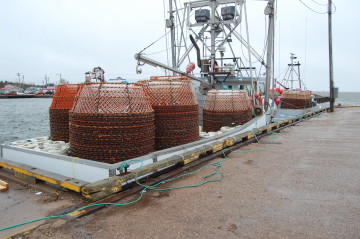 ALBERTON — Carter Hutt anticipates there will be a drive on Wednesday morning to get crab boats ready for a season which is scheduled to get underway on Friday. Hutt is president of the 27-member P.E.I. Snow crab Association. He learned soon after a Tuesday afternoon conference call with the Department of Fisheries and Oceans that fishermen on the call agreed unanimously to have the snow crab season for Area 12, which includes P.E.I. boats, commence at 4 a.m. Friday. The opening, however, remains dependent upon favourable ice and wind conditions. Even before the conference call, Hutt was optimistic the season would start Friday. Read the rest here 17:52
ALBERTON — Carter Hutt anticipates there will be a drive on Wednesday morning to get crab boats ready for a season which is scheduled to get underway on Friday. Hutt is president of the 27-member P.E.I. Snow crab Association. He learned soon after a Tuesday afternoon conference call with the Department of Fisheries and Oceans that fishermen on the call agreed unanimously to have the snow crab season for Area 12, which includes P.E.I. boats, commence at 4 a.m. Friday. The opening, however, remains dependent upon favourable ice and wind conditions. Even before the conference call, Hutt was optimistic the season would start Friday. Read the rest here 17:52
Must-read court decision for anyone with an interest in the fishery
 It’s a different coast and a different ocean – and the case was heard in Vancouver – but a judge in the Federal Court, originally from Newfoundland, has put together some required reading for anyone whose province has a fishery. Judge Elizabeth Heneghan has written a fascinating fisheries primer in her 16,500-word March 11 decision in Calwell Fishing Ltd., Melvin Glen Calwell, Dale Vidulich, Gerald Warren, Aquamarine Transportation Ltd. and George Manson, plaintiffs, and Her Majesty the Queen, defendant. (You can see it here – (You can see it here – http://bit.ly/1MVXZer) There is, by the way, one other reference to the Atlantic coast, but it’s almost certainly an error. There is, by the way, one other reference to the Atlantic coast, but it’s almost certainly an error. The case has a simple theme: what rights do you have to take action against the federal Department of Fisheries and Oceans if it changes fisheries rules and costs you your livelihood? Read the article, Click here 08:47
It’s a different coast and a different ocean – and the case was heard in Vancouver – but a judge in the Federal Court, originally from Newfoundland, has put together some required reading for anyone whose province has a fishery. Judge Elizabeth Heneghan has written a fascinating fisheries primer in her 16,500-word March 11 decision in Calwell Fishing Ltd., Melvin Glen Calwell, Dale Vidulich, Gerald Warren, Aquamarine Transportation Ltd. and George Manson, plaintiffs, and Her Majesty the Queen, defendant. (You can see it here – (You can see it here – http://bit.ly/1MVXZer) There is, by the way, one other reference to the Atlantic coast, but it’s almost certainly an error. There is, by the way, one other reference to the Atlantic coast, but it’s almost certainly an error. The case has a simple theme: what rights do you have to take action against the federal Department of Fisheries and Oceans if it changes fisheries rules and costs you your livelihood? Read the article, Click here 08:47
Department of Fisheries and Oceans cuts N.L. snow crab quotas for 2016 season
The Department of Fisheries and Oceans has cut the total allowable catch for snow crab in Newfoundland and Labrador this upcoming season by about 13 per cent. Some fishing areas will see quota cuts of more than that — division 3Ps, in the Placentia Bay area, will see a 30 per cent reduction, while most areas of 3K, along the northeast coast, will see a 20 per cent cut. Some areas of 3LNO also face 20 per cent cuts. DFO has set the 2016 total limit at 43,802 tonnes. The first divisions open for fishing on April 4. Link 08:57
this upcoming season by about 13 per cent. Some fishing areas will see quota cuts of more than that — division 3Ps, in the Placentia Bay area, will see a 30 per cent reduction, while most areas of 3K, along the northeast coast, will see a 20 per cent cut. Some areas of 3LNO also face 20 per cent cuts. DFO has set the 2016 total limit at 43,802 tonnes. The first divisions open for fishing on April 4. Link 08:57
LIFO (Last in-First out) numbers need a closer look: economist
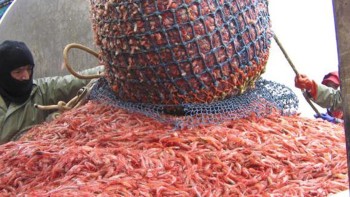 Debate around the last in, first out (LIFO) policy for the allocation of shrimp quotas rages, even as the Department of Fisheries and Oceans begins to re-evaluate applying its quota cuts to inshore fishermen before any larger, year-round enterprises. At the Comfort Inn in St. John’s Tuesday afternoon, made a presentation at a gathering of the St. John’s Board of Trade, saying more study would help any facts-based debate and decision-making around LIFO. He told his audience, based on figures available, he would expect the province’s GDP to fall $540 for every tonne of shrimp transferred from the year-round fleet to the inshore fishery. Read the rest here 09:20
Debate around the last in, first out (LIFO) policy for the allocation of shrimp quotas rages, even as the Department of Fisheries and Oceans begins to re-evaluate applying its quota cuts to inshore fishermen before any larger, year-round enterprises. At the Comfort Inn in St. John’s Tuesday afternoon, made a presentation at a gathering of the St. John’s Board of Trade, saying more study would help any facts-based debate and decision-making around LIFO. He told his audience, based on figures available, he would expect the province’s GDP to fall $540 for every tonne of shrimp transferred from the year-round fleet to the inshore fishery. Read the rest here 09:20
Department of Fisheries and Oceans’ last in, first out (LIFO) is working exactly as planned
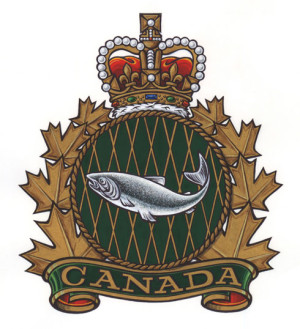 LIFO was never intended to have a long shelf life. Its purpose was and is to pave the way for what has been in the planning and negotiating stage for a long time now, and which is designed to replace it — the Comprehensive Economic Trade Agreement (CETA) with the European Union. Between now and when that trade agreement is ratified, LIFO will help force inshore fishers, processors, plant workers, coastal communities and out of the fishery — and the province of Newfoundland and Labrador is about to take a $280-million bribe to help grease the wheels. LIFO is merely a symptom, a precursor if you will, to CETA. Read the rest here 08:40
LIFO was never intended to have a long shelf life. Its purpose was and is to pave the way for what has been in the planning and negotiating stage for a long time now, and which is designed to replace it — the Comprehensive Economic Trade Agreement (CETA) with the European Union. Between now and when that trade agreement is ratified, LIFO will help force inshore fishers, processors, plant workers, coastal communities and out of the fishery — and the province of Newfoundland and Labrador is about to take a $280-million bribe to help grease the wheels. LIFO is merely a symptom, a precursor if you will, to CETA. Read the rest here 08:40
For some reason, codfish off the province’s south coast aren’t living to a ripe old age.
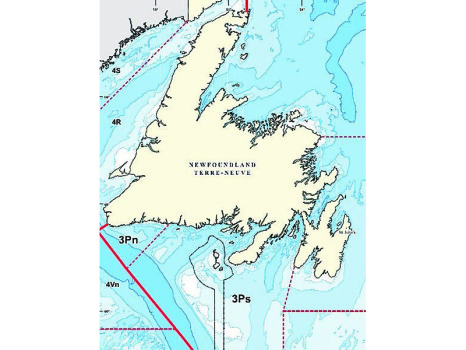 “The obvious question is what’s going on?” said Rick Rideout, a research scientist with the Department of Fisheries and Oceans (DFO). Rideout was the lead scientist on DFO’s science advisory report for last fall’s 3Ps cod stock assessment. The number of new fish in 3Ps seems to have improved in recent years, Rideout said Thursday, but the stock’s trajectory has taken a downward turn. “It’s above the limit reference point, but it’s certainly below the target of where we’d like it to be,” he said. There’s certainly some reason for concern, yeah.” Read the rest here 07:44
“The obvious question is what’s going on?” said Rick Rideout, a research scientist with the Department of Fisheries and Oceans (DFO). Rideout was the lead scientist on DFO’s science advisory report for last fall’s 3Ps cod stock assessment. The number of new fish in 3Ps seems to have improved in recent years, Rideout said Thursday, but the stock’s trajectory has taken a downward turn. “It’s above the limit reference point, but it’s certainly below the target of where we’d like it to be,” he said. There’s certainly some reason for concern, yeah.” Read the rest here 07:44
B.C. First Nation, fisheries officials agree to herring management plan
 A First Nation on British Columbia’s central coast is applauding what it says is a dramatic move toward science-based, joint management of area herring stocks. The Heiltsuk Tribal Council says a management plan for the 2016 central coast herring fishery has been reached with the Department of Fisheries and Oceans. Chief Councillor Marilyn Slett says the plan contains four key improvements including a reduction in the central coast herring harvest rate to seven per cent from 10 per cent. Read the article here 13:58
A First Nation on British Columbia’s central coast is applauding what it says is a dramatic move toward science-based, joint management of area herring stocks. The Heiltsuk Tribal Council says a management plan for the 2016 central coast herring fishery has been reached with the Department of Fisheries and Oceans. Chief Councillor Marilyn Slett says the plan contains four key improvements including a reduction in the central coast herring harvest rate to seven per cent from 10 per cent. Read the article here 13:58
Nova Scotia young lobster population shows no sign of decline
 Federal fisheries scientists say their most recent sampling of juvenile lobster in southwest Nova Scotia indicate a decade-long trend of abundant populations is holding steady. “It’s closer to the long-term average. Not the extreme high or low. Somewhere along the middle of what we’ve seen,” said Adam Cook, a federal research scientist. Canada’s Fisheries and Oceans department has three sites in southwest Nova Scotia where it captures juvenile lobsters after they settle to the ocean floor. Read the article here 10:54
Federal fisheries scientists say their most recent sampling of juvenile lobster in southwest Nova Scotia indicate a decade-long trend of abundant populations is holding steady. “It’s closer to the long-term average. Not the extreme high or low. Somewhere along the middle of what we’ve seen,” said Adam Cook, a federal research scientist. Canada’s Fisheries and Oceans department has three sites in southwest Nova Scotia where it captures juvenile lobsters after they settle to the ocean floor. Read the article here 10:54
Federal agency accused of condemning British Columbia commercial sockeye fleet to feast-or-famine cycle
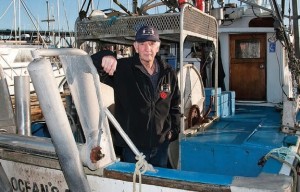 While fishermen in Alaska were enjoying a banner year thanks to massive returns of Bristol Bay sockeye, their counterparts in were pretty much idled, thanks to lower-than-expected returns of sockeye and pink salmon and to what fishermen say is overly cautious escapements. The Department of Fisheries and Oceans (DFO) was not able to provide a final tally on this year’s returns. But Fraser River sockeye returns this year are unofficially being reported to be around two million – about a third of the 6.8 million median forecast – and Fraser River pink,,, Read the article here 15:37
While fishermen in Alaska were enjoying a banner year thanks to massive returns of Bristol Bay sockeye, their counterparts in were pretty much idled, thanks to lower-than-expected returns of sockeye and pink salmon and to what fishermen say is overly cautious escapements. The Department of Fisheries and Oceans (DFO) was not able to provide a final tally on this year’s returns. But Fraser River sockeye returns this year are unofficially being reported to be around two million – about a third of the 6.8 million median forecast – and Fraser River pink,,, Read the article here 15:37
Bluefin tuna industry needs more oversight, Pictou County fisherman says
A fisherman in Pictou County wants the Department of Fisheries and Oceans to increase oversight of the bluefin tuna fishing industry in Nova Scotia. Harold Bowen has fished out of Caribou along the Northumberland Strait his entire life, including for tuna. One day, earlier this fall, seven dead tuna — one weighing 317 kilograms — washed up on the rocks, Bowen said Wednesday. Part of the fishing line was still hooked in at least one of them, he said. He says that’s an indication the tuna died as a result of improper fishing practices,,, Read the article here 08:46
Turf War: Lobster fishermen charged after confrontation with First Nations
 Anthony Peter-Paul expected his first season as a lobster fisherman to be tough and profitable, but it turned into a situation where, he says, he “felt helpless.” The St. Thomas University student, and Pabineau First Nation man, spent the 2015 season fishing lobster in the Bay of Chaleur with a first-time licence-holder, also from Pabineau. It started off with a fishermen’s meeting which they have every year at Stonehaven,” said Peter-Paul. Read the rest here 11:11
Anthony Peter-Paul expected his first season as a lobster fisherman to be tough and profitable, but it turned into a situation where, he says, he “felt helpless.” The St. Thomas University student, and Pabineau First Nation man, spent the 2015 season fishing lobster in the Bay of Chaleur with a first-time licence-holder, also from Pabineau. It started off with a fishermen’s meeting which they have every year at Stonehaven,” said Peter-Paul. Read the rest here 11:11
Commercial fisherman pulls a grass carp from his net in Lake Erie
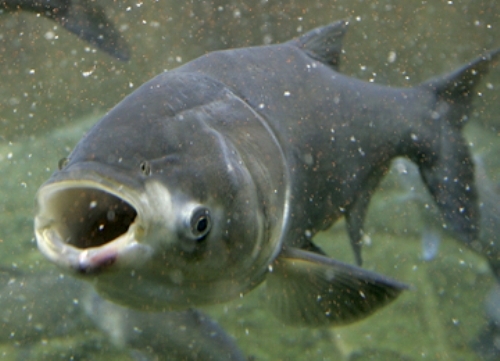 On Thursday, September 17, 2015 a commercial fisherman had an interesting find when he pulled a grass carp from his net in Lake Erie .The Grass carp is a species of the Asian carp, which feeds on aquatic vegetation. The fish was caught west of Point Pelee Thursday morning and weighed in at about 23 pounds (10.5 kilograms), though they have been known to grow upwards of 99 pounds (45 kilograms). The carp was sent to the Department of Fisheries and Oceans in Burlington for testing. This specific testing will include whether the fish was fertile or sterile,,, Read the rest here 12:22
On Thursday, September 17, 2015 a commercial fisherman had an interesting find when he pulled a grass carp from his net in Lake Erie .The Grass carp is a species of the Asian carp, which feeds on aquatic vegetation. The fish was caught west of Point Pelee Thursday morning and weighed in at about 23 pounds (10.5 kilograms), though they have been known to grow upwards of 99 pounds (45 kilograms). The carp was sent to the Department of Fisheries and Oceans in Burlington for testing. This specific testing will include whether the fish was fertile or sterile,,, Read the rest here 12:22
Cooling water in the Fraser River system take heat off returning salmon
 The Department of Fisheries and Oceans is relieved to see water temperatures in the Fraser River system slowly dropping from summertime highs that could have proved lethal to returning salmon. Area director Stu Cartwright says temperatures are now around 15 or 16 degrees, an acceptable range crucial to the health of 1.5-million sockeye due to reach spawning grounds in B.C. over the coming weeks. But despite the good news about cooler river temperatures, Cartwright says there is still concern about the total number of returning fish. Read the rest here 16:28
The Department of Fisheries and Oceans is relieved to see water temperatures in the Fraser River system slowly dropping from summertime highs that could have proved lethal to returning salmon. Area director Stu Cartwright says temperatures are now around 15 or 16 degrees, an acceptable range crucial to the health of 1.5-million sockeye due to reach spawning grounds in B.C. over the coming weeks. But despite the good news about cooler river temperatures, Cartwright says there is still concern about the total number of returning fish. Read the rest here 16:28
Nearly four times as many tuna landed on P.E.I. than same time last year
 In 2014, the Island fleet had landed 28 fish, weighing 6.988 tonnes by September 3. By September 3 this year, Department of Fisheries and Oceans numbers indicate 107 tuna, weighing approximately 25 tonnes, have already made their way to buying stations. Good August weather might partly explain the higher landings so far this year suggests Doug Fraser, a member of the P.E.I. Fishermen’s Association’s tuna advisory committee. P.E.I benefitted from a in previous years, too, but this year it is being handled separately. Read the rest here 09:25
In 2014, the Island fleet had landed 28 fish, weighing 6.988 tonnes by September 3. By September 3 this year, Department of Fisheries and Oceans numbers indicate 107 tuna, weighing approximately 25 tonnes, have already made their way to buying stations. Good August weather might partly explain the higher landings so far this year suggests Doug Fraser, a member of the P.E.I. Fishermen’s Association’s tuna advisory committee. P.E.I benefitted from a in previous years, too, but this year it is being handled separately. Read the rest here 09:25
P.E.I. eel fishermen want 2-week season delay
 P.E.I. eel fishermen say they need a later start to the season to avoid finding dead eels in their nets. The problem is the water in the warm rivers is anoxic, the result of decaying sea lettuce stripping all the oxygen out of the water. “Eels get in the net and if the water where the net is goes anoxic, then they can’t get out and they succumb,” said Bruce Raymond of the Department of Environment. The issue is becoming an annual problem that fishermen want to avoid. “The first day, fellas on the river lost the whole catch, as far as four to 500 pounds on that day. Read the rest here 08:29
P.E.I. eel fishermen say they need a later start to the season to avoid finding dead eels in their nets. The problem is the water in the warm rivers is anoxic, the result of decaying sea lettuce stripping all the oxygen out of the water. “Eels get in the net and if the water where the net is goes anoxic, then they can’t get out and they succumb,” said Bruce Raymond of the Department of Environment. The issue is becoming an annual problem that fishermen want to avoid. “The first day, fellas on the river lost the whole catch, as far as four to 500 pounds on that day. Read the rest here 08:29
Ocean blob brings tropical fish to B.C. coast
 Something unusual is happening off the coast of British Columbia. Fish species normally found in the warm waters of the tropics are finding their way north — and a blob is being blamed. Ian Perry, a research scientist with the Department of Fisheries and Oceans based on Vancouver Island, says butterfish, tope sharks, ocean sunfish, even a finescale triggerfish have all been spotted further north than usual. Perry says it’s not uncommon for some of these fish to find their way northward every five to 10 years, whenever there’s an El Nino, a massive patch of warm water that appears in the Equatorial Pacific every few years. Read the rest here 09:51
Something unusual is happening off the coast of British Columbia. Fish species normally found in the warm waters of the tropics are finding their way north — and a blob is being blamed. Ian Perry, a research scientist with the Department of Fisheries and Oceans based on Vancouver Island, says butterfish, tope sharks, ocean sunfish, even a finescale triggerfish have all been spotted further north than usual. Perry says it’s not uncommon for some of these fish to find their way northward every five to 10 years, whenever there’s an El Nino, a massive patch of warm water that appears in the Equatorial Pacific every few years. Read the rest here 09:51
Controversial commercial fishery on Howe Sound shut down
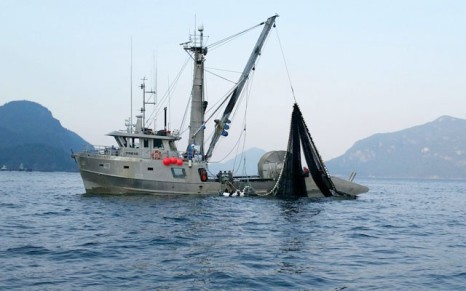 A commercial fishery on Howe Sound was shut down by the federal government last week after it was discovered there wasn’t “the abundance of fish” originally expected — despite prior warnings from local anglers of low pink salmon numbers. The Department of Fisheries and Oceans (DFO) announced the pink salmon fishery for Aug. 10 to 15, limiting it to two seine vessels between 6 a.m. and 9 p.m. daily. It was shut down Wednesday, Aug. 12. “The DFO was not yet seeing the abundance of fish that were anticipated for that time, therefore it was prudent,,, Read the rest here 20:16
A commercial fishery on Howe Sound was shut down by the federal government last week after it was discovered there wasn’t “the abundance of fish” originally expected — despite prior warnings from local anglers of low pink salmon numbers. The Department of Fisheries and Oceans (DFO) announced the pink salmon fishery for Aug. 10 to 15, limiting it to two seine vessels between 6 a.m. and 9 p.m. daily. It was shut down Wednesday, Aug. 12. “The DFO was not yet seeing the abundance of fish that were anticipated for that time, therefore it was prudent,,, Read the rest here 20:16






